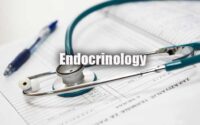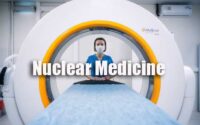Sample Question Papers for MBBS Students Jobs and Interviews
The Free download links of Sample Question Papers for MBBS Students Practice Papers enclosed below. Candidates who are going to start their preparation for the MBBS Jobs Exam can make use of these links.

Download the Sample Question Papers for MBBS Students Exam Last 5 Years Papers PDF along with the Answers. Sample Question Papers for MBBS Students Previous Papers are available. Applicants can download Sample Question Papers for MBBS Students Old Question Papers.
Also, get the Study material, Preparation tips in addition to the Sample Question Papers for MBBS Students Previous Papers for Medical posts. On our page, we provide Sample Question Papers for MBBS Students Previous Papers for the sake of aspirants.
MBBS Students Sample Question Papers
1. True and false broad ligament fibroids differentiated by anatomic position of
A) Ureter
B) Internal iliac vein
C) External iliac vein
D) Descending cervical artery –
2. Pap smear is useful in diagnosis of all expect
A) Gonorrhoea
B) T.vaginalis
C) HPV
D) Inflammatory changes
3. A 16 year old girl presents with 6*6 cm right ovarian mass with absent AFP, negative CA125, and increased alkaline phosphatase, diagnosis is
A) Dysgerminoma
B) Mucinous cystadeno CA
C) Endodermal sinus tumor
D) Teratoma
4. Endometrial CA involving > 50% of myometrium with vaginal metastasis. No pelvic or para aortic nodes involved with positive peritoneal cytology. Staging is –
A) Illa
B) Illb
C) Illc
D) IVa
5. A 35 year old mother of 2 children, is suffering from amenorrhoea for her last 10 months. She has a history of failure of lactation following second delivery but remained asymptomatic thereafter. Skull x-ray shows empty sella syndrome ,diagnosis is
A) Menopause
B) Pituitary tumor
C) Sheehans syndrome
D) Breast fibroadenoma
6. In post menopausal women, HRT is indicated for all except —
A) Vaginal dryness
B) Hot flushes
C) Coronary artery disease
D) Osteoporosis
7. Which of the following isn’t included in Amsel’s criteria-
A) Characteristic homogenous greyish white discharge
B) Positive whiff test
C) Vaginal fluid ph <4.7
D) Clue cells
8. A 25 year old female has a 2 cm soft non tender swelling in the vulva , just outside the vaginal introitus. While walking she has discomfort. The treatment of choice —
A) Antibiotics
B) Incision and drainage
C) Marsupialisation
D) Surgical excision
9. A 28 yr old nulliparous woman with 3rd degree uterine prolapse and cervical elongation with good abdominal wall tone is treated with —
A) Le Fort’s colpodeisis
B) Fothergill’s repair
C) Cervicopexy
D) Hysterectomy
10. Bonney’s test is used to demonstrate –
A) Stress urinary incontinence
B) Sensory urge incontinence
C) Motor urge incontinence
D) All of the above
11. Modes of intervention in primary prevention:
A) Specific protection
B) Early diagnosis
C) Rehabilitation
D) All of the above
12. Measures of central tendency include:
A) Mean, Mode, Range
B) Median, Mode, Variation
C) Mean, Mode, Median
D) Mean, Range, Variation
13. Aedes aegypti is an important vector of:
A) Malaria
B) Filariasis
C) Dengue
D) Japanese encephalitis
14. Ability of a test to identify correctly those who do not have the disease is:
A) Sensitivity
B) Specificity
C) Predictive value
D) None of the above
15. First case of a communicable disease introduced into the population unit being studied is:
A) Index Case
B) Primary Case
C) Secondary Case
D) Suspect Case
16. The continuous scrutiny of the factors that determine the occurrence and distribution of disease and other condition of ill health is:
A) Epidemiology
B) Monitoring
C) Evaluation
D) Surveillance
17. Case fatality rate may be used as an index of:
A) Virulence
B) Communicability
C) Severity
D) None of the above
18. Prevalence of low birth weight (<2.5 kg) is:
A) Morbidity indicator
B) Socio economic indicator
C) Health care delivery indicator
D) Nutritional indicator
19. Confirmatory evidence of recent faecal pollution of water is:
A) E. coli
B) Clperfringes
C) Faecal streptococci
D) Klebsiella aerogenes
20. When the disease agent undergoes cyclical change but does not multiply in the body of the arthropod:
A) Cyclo-propagative
B) Cyclo-development
C) Propagative
D) Cyclical transmission
21. Extrinsic incubation period in malaria is:
A) 5-10 days
B) 10-14 days
C) 10-20 days
D) 14-20 days
22. PQLI includes:
A) MMR, life expectancy at 1 year and case fatality rate
B) IMR, life expectancy at 1 year and literacy
C) MMR, literacy and socio economic class
D) IMR, life expectancy at birth and knowledge
23. Triage should be carried out at the site of disaster to:
A) First come first treated
B) Identify the victim
C) Bed availability at the hospital
D) Severity of their injuries
24. The following is a benefit to the employees under ESI act is:
A) Sickness expenses
B) Mortalitybenefit
C) Maternity benefit
D) Employment benefit
25. Population based registries is a registration for:
A) Diabetes
B) Cardiovascular disease
C) Non communicable disease
D) Cancer
26. Multi-drug theory for leprosy includes the following except:
A) Rifampicin
B) INH
C) Clofazimine
D) Dapsone
27. Estimation of prevalence of infection of tuberculosis in a population is done by:
A) ELISA
B) Montoux text
C) Tuberculin test
D) Sputum microscopy
28. Fast breathing in management of pneumonia in a child aged 2 months upto 12 months:
A) 30 breaths per minute or more
B) 40 breaths per minute or more
C) 50 breaths per minute or more
D) 60 breaths per minute or more
29. Which of the following vaccine is not a live vaccine:
A) Rota virus vaccine
B) Hepatitis B vaccine
C) DPT
D) Measles vaccine
30. Iodized salt at the consumer level should be:
A) 20 ppm
B) 15 ppm
C) 10 ppm
D) 05 ppm
31. Epidemiological triad includes the following:
A) Environment, man, animal
B) Host, agent, arthropod
C) Nature, host, agent
D) Agent, host, environment
32. Secular trend is a type of:
A) Descriptive Epidemiology
B) Analytical Epidemiology
C) Experimental Studies
D) None of the above.
33. A disease that is transmitted through contact
A) Communicable Disease
B) Infectious Disease
C) Contagious Disease
D) All of the above
34. Prevention of Dehydration in Diarrhoea in children is done by
A) ORS alone
B) ORS + continued feeding
C) Medication
D) Restriction of food
35. Isolation is required in cases of Diptheria
A) Agree
B) Disagree
C) Cannot say
D) Do not know
36. Serious side effect of Measles Vaccine
A) TSS
B) Fever
C) Rash
D) Convulsion
37. All cold chain equipments are available at PHC except
A) Vaccine Carrier
B) Cold Boxes
C) ILR
D) Walk in Cooler
38. Vaccines are normally stored in temperature
A) 2°c — 8°c
B) — 20 °c
C) 0 – 2 °c
D) None of the above
39. Breast feeding in HIV infected mother
A) Contra indicated
B) informed Choice
C) Strongly Indicated
D) All of the above
40. Hepatitis B infection is a
A) Blood Borne Infection
B) Food Borne Infection
C) Water Borne Infection
D) Arthropod Borne Infection
41. Hepatitis A infection is a
A) Water Borne Infection
B) Blood Borne Infection
C) Arthropod Borne Infection
D) All of the above
42. Anti – Rabies vaccine is indicated in
A) Bites by wild animal
B) Bites by unknown/ Untraceable animal
C) Bites by Rabid animal
D) All Bites
43. Dog Bites should be treated by
A) Vaccination + Local Cleansing
B) Only local cleansing with soap
C) Only observing the Dog for 10 days
D) Only Vaccination
44. Diseases transmitted by sexual route are all except
A) Hepatitis B
B) Hepatitis A
C) HIV
D) Malaria
45. Population covered by a PHC is
A) 5000
B) 10,000
C) 20,000
D) 50,000
46. Incubation period for Staphylococcal food poisoning is
A) 7 — 10 hours
B) 12 — 36 hours
C) 1 — 6 hours
D) > 6 hours
47. Components of DOTS is
A) Accountability
B) Economy
C) Surveillance
D) All of the above
48. Field level worker are all except
A) AWW
B) ASHA
C) Village Health Guide
D) C.D.P.O
49. Requirement of protein for adult is
A) 1 gm per kg body weight
B) 69 gm per adult
C) 2 – 3 gm per adult
D) None of the above
50. Contact period for Chlorination water is
A) 3 hours
B) 3 – 4 hours
C) 1 hour
D) 10 mins



